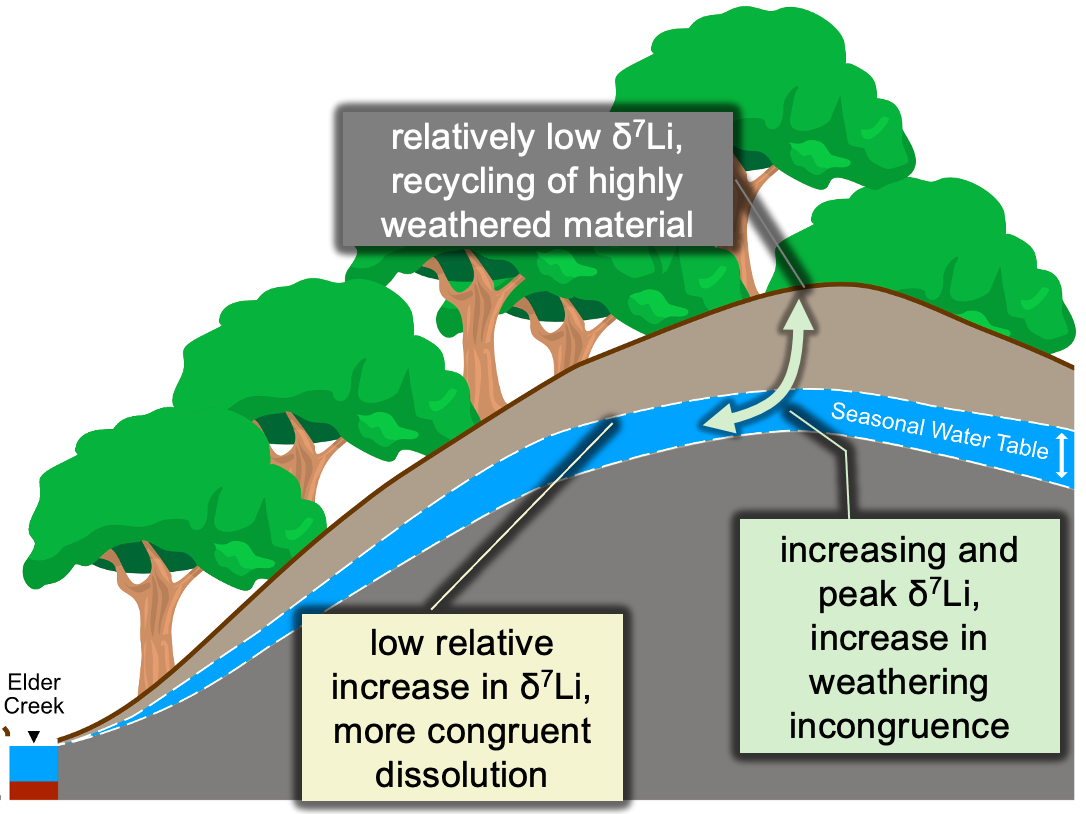
PhD candidate Jon Golla has just published the first chapter of his thesis research in the journal Earth and Planetary Science Letters with his supervisor, Dr. Jenny Druhan. Human reliance and influence on natural resources have motivated vital research into how the Earth’s surface systems interact to store freshwater, sustain life, and regulate climate. This “critical zone” of the Earth, from coherent bedrock to the tops of clouds, is the living skin we all depend upon to survive. Jon’s open-access article is the first to directly show how meteoric water drains below soil and into weathered bedrock to initiate the chemical signatures of headwater streams. Jon uses lithium stable isotope ratios, a powerful tracer of silicate weathering reactions, to show that the shale bedrock comprising his field site evolves the fluids that drain through it from infiltration, through the vadose zone, to groundwater and ultimately the steam draining this landscape. He has used these data to develop a process-based numerical model coupling fluid flow to chemical reactions and attendant isotope fractionation. This model can now be applied in other critical zone environments and help us to unpack the weathering signatures of larger rivers. This publication is also the first product of Jon’s collaboration with colleagues at the Institut de Physique du Globe de Paris, where Jon is currently spending the summer measuring silicon isotopes to build upon this study. Congratulations Jon!

Golla, J.K.; Kuessner, M.L.; Henehan, M.J.; Bouchez, J.; Rempe, D.M.; Druhan, J.L. (2021) The evolution of lithium isotope signatures in fluids draining actively weathering hillslopes. Earth and Planetary Science Letters, 567, 116988. https://doi.org/10.1016/j.epsl.2021.116988